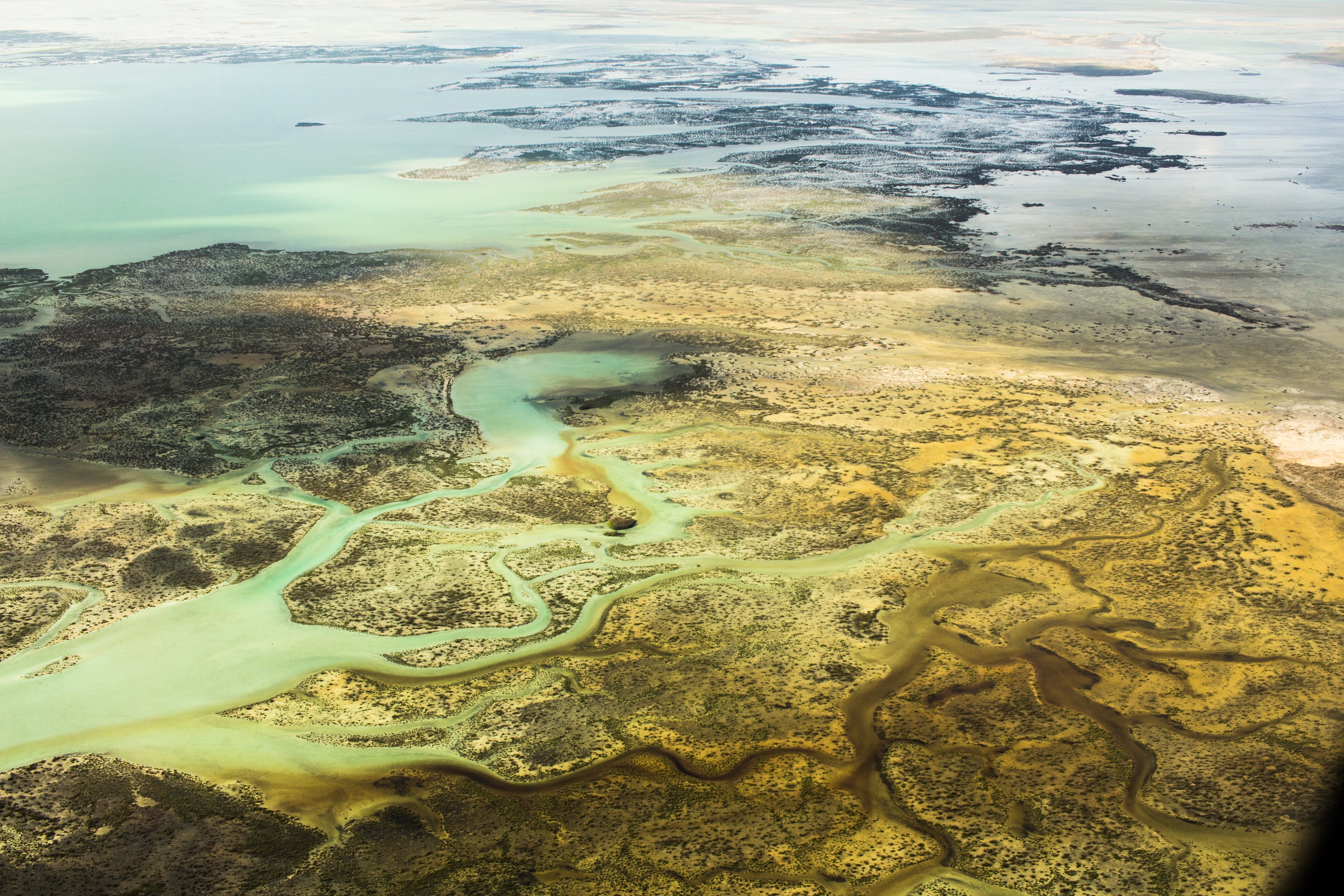The earliest ecosystems we know of were built entirely by microscopic lifeforms. Similar ecosystems that exist today help us understand the history of life on our planet. We set out to investigate their sensitivity to sea level change, but the occurrence of an extreme hurricane redirected our study and illustrated how climate change outcomes can impact life in surprising ways.
When you think of living creatures, the first things that come to mind are probably lush plants and big animals. However, most lifeforms on Earth are microscopic, and for most of the Earth’s history, such microbes ruled the planet. Plants and animals have only been around for ~500 million years, but the Earth has been home to microbes for several billion years.
Before the rise of plants and animals, the biggest features of the biosphere were microbial mats —structures built out of layer upon layer of bacterial growth. Mats can exhibit a wide range of textures, from tough and leathery to incoherent and goopy, and can harden into rock to leave behind fossils (that is how we know they have been around for so long). In the larger ecosystems that are more familiar to us, plants make food through photosynthesis by capturing energy from sunlight and feed a food chain of animals. Similarly, mat communities are often fueled by bacteria that do photosynthesis and feed a food chain of other bacteria, each contributing different functions to the ecosystem.
In the distant past, microbial mats were widespread across huge areas of shallow coastal waters. But today, you have to go to special environments to find pristine, extensive examples. One particularly good place is Little Ambergris Cay, a tiny, uninhabited island in the Turks and Caicos. Much of Little Ambergris Cay is covered by a beautiful tidal lagoon that is full of mats, surrounded by a rim of rock and beach. Within the lagoon, the mats vary with water level; those in the higher and drier areas that only get wet during high tide look different from those in the lower areas that are almost always under water.
We began this study to investigate those differences between mat types. Looking back in time, we hoped this would help us better understand similar differences among fossils of ancient mats. Looking forward in time, one of the first consequences of impending climate change is going to be sea level rise. Since the mats are so finely tuned to water level, they will feel those changes early, and understanding their differences could help us figure out how that might affect them.
We conducted fieldwork for this project in June 2016 and August 2017. In September 2017, the eye of Hurricane Irma —one of the strongest hurricanes ever recorded— directly hit the island, causing catastrophic destruction. Having just been there, documenting the baseline system immediately beforehand, put us in an extraordinary position to be able to study the impact, and then recovery, from such a devastating storm. We returned for follow up work three times over the next two years to do that.
Along with sea level rise, increasingly extreme weather like Hurricane Irma is another imminent consequence of climate change. However, these two consequences cause very different types of disruption. The slow march of sea level rise manifests over many years, while the sudden destruction of an extreme storm happens in minutes. We can predict many such consequences of climate change, but it is much harder to predict how the effects of multiple different consequences could impact each other.
We found that the populations of mat microbes that were the most sensitive to sea level were surprisingly robust at recovering from the storm. In fact, it seemed like storm disruption might even help them adapt to changing sea levels by moving them to new areas with the right water depth and generating fresh surfaces in those areas for them to grow on. In contrast, other populations that were not so sensitive to sea level were heavily impacted by the storm, and did not recover until almost two years later. During that time, their absence changed the whole mat ecosystem, impacting the ways mats contribute to carbon storage and nutrient cycling. Such changes could affect biosphere processes on a much larger scale than just the mats themselves.
This work gives a unique example of how complicated the impacts of climate change can be. We know that microbial mats have survived through periods of changing climate in the past, and we expect them to do so again; they are far more resilient than most larger lifeforms. What we still don’t know, for mats and beyond, is exactly how all the various consequences of climate change will counteract or amplify each other in ways that could really change the bigger picture.
Original Article:
Lingappa, U. F., Stein, N. T., Metcalfe, K. S., Present, T. M., Orphan, V. J., Grotzinger, J. P., Knoll, A. H., Trower, E. J., Gomes, M. L., & Fischer, W. W. (2022). Early impacts of climate change on a coastal marine microbial mat ecosystem. Science Advances, 8(21). https://doi.org/10.1126/sciadv.abm7826
 Earth & Space
Earth & Space



